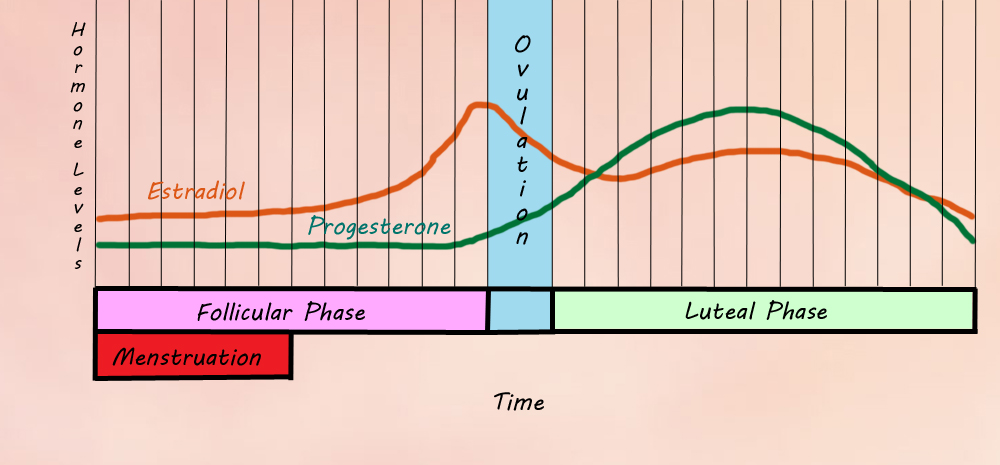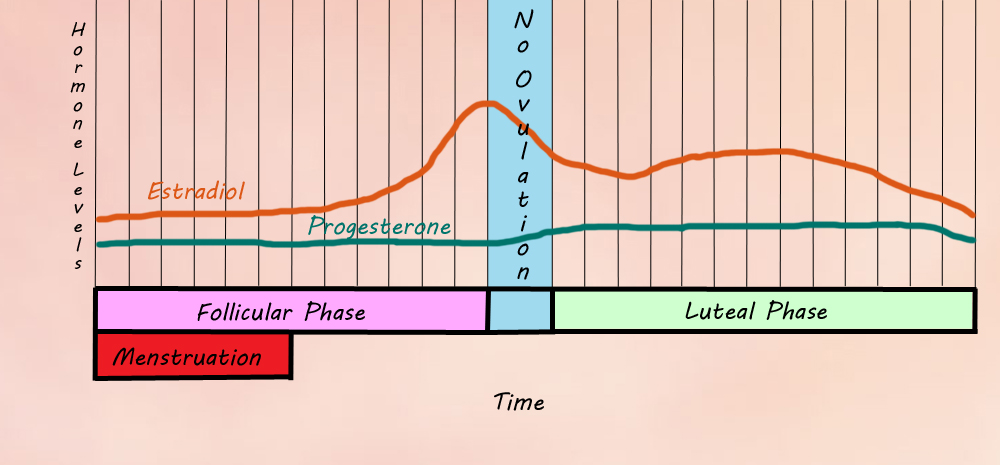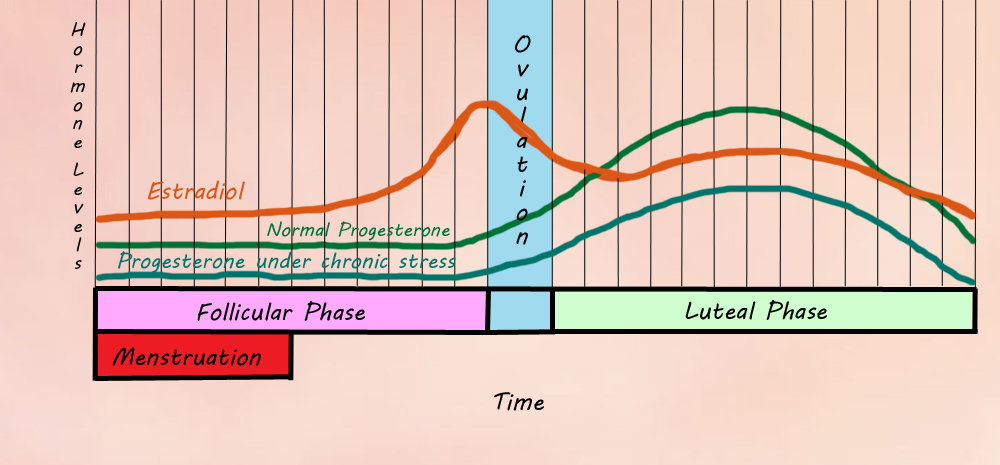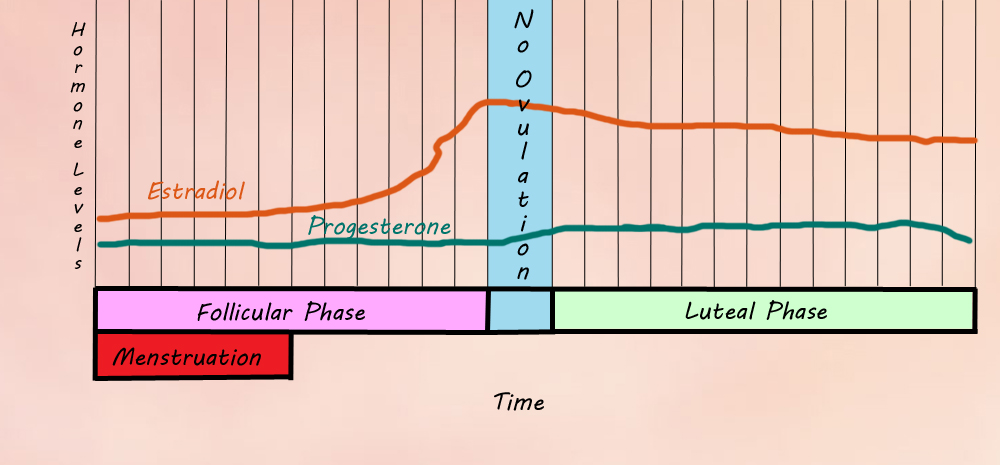PMS (Premenstrual Syndrome) and other Pre-menopausal imbalances
PMS
PMS is defined as emotional and physical symptoms associated with the last half of the menstrual cycle. These symptoms include bloating, depression, irritability, sugar cravings, fatigue, hot flashes, acne, tender breasts, anxiety, mood swings, headaches, and water retention and cramping. I will address how to minimize these symptoms and also heavy bleeding and irregular menses (periods).
To understand hormone imbalances, we must first understand the normal balance. The chart below shows the different ways that estradiol (the most potent estrogen) and progesterone fluctuate throughout the cycle.

Estradiol
Normally, estradiol increases from the first day of menses (bleeding) (Day 1) until the time of ovulation. Then, it slowly decreases until the next first day of menses. Ovulation (egg released from ovary) occurs about Day 14. This egg will produce progesterone until it is fertilized or menses starts. This is why you see the progesterone increase and then decrease. This decrease in progesterone and estrogen causes menses.
Estradiol and progesterone normally function in a certain ratio. When this ratio is too high or too low, many women experience PMS and menstrual symptoms. One of the ways this occurs is through anovulation (lack of ovulation). When no egg is released from the ovaries, the increase in progesterone does not occur. This often results in the same rapid decrease in estradiol as always, but anytime estradiol levels change rapidly without enough progesterone, symptoms occur such as hot flashes, depression, acne, tender breasts, anxiety, mood swings, headaches, and water retention. Because progesterone is not there to counter the growth-stimulating effect of estrogen on the uterus, there is also heavier bleeding and cramping with the period.

Estradiol Cycle Anovulation
Another way this occurs is through stress. The low, regular level of progesterone is partly manufactured in the adrenal gland. When you have high cortisol, the stress hormone, for an extended period, it can decrease the production of progesterone. See the chart below for a picture of how this would look.

Estradiol Cycle Stress
Because the ratio of progesterone is still too low compared with estradiol levels, you may experience the same symptoms as if you did not ovulate.
What about irregular menses or heavy bleeding?
This is usually caused by anovulation. When there is no egg secreted and no progesterone decrease at the end of the cycle, menses (period) does not start when it should.

Estradiol Cycle Without Ovulation
Estradiol may continue to be secreted trying to trigger ovulation. It may continue to be high until the body shuts it off or it may just slowly decrease in levels. When it reaches a certain level, it triggers menses. When the estradiol is high, it continues to stimulate the uterus to grow. This results in a later, larger bleed, often accompanied by severe cramping.
What can I do about this?
First of all, always start with what you are eating and lifestyle. Make sure you are getting 8 hours of good quality sleep every night and read about how food affects your hormones here.
While you are working on your food and lifestyle, I would recommend doing a hormone test during the luteal phase (usually around day 21, with day 1 being the first day of menses). This could be a limited hormone test or a full hormone test. Then, we can work with your specific circumstances and get a plan for supplements or hormones to use and food/sleep changes that may help. Please contact me for more information.